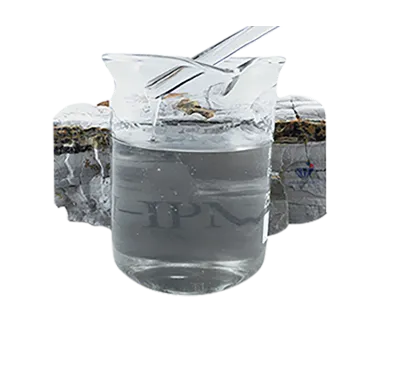
Dec . 17, 2024 20:58 Back to list
Synthesis and Applications of Hydroxyethyl Cellulose in Various Industries
Synthesis of Hydroxyethyl Cellulose A Comprehensive Overview
Hydroxyethyl cellulose (HEC) is a non-ionic cellulose ether widely used in various applications, including pharmaceuticals, cosmetics, food products, and construction materials. Its unique properties, such as high viscosity, solubility in cold water, and excellent thickening and emulsifying abilities, make it a preferred choice in many formulations. This article aims to provide a detailed understanding of the synthesis of hydroxyethyl cellulose and its significance.
Chemical Structure and Properties
HEC is derived from cellulose, a natural polymer obtained from plant cell walls. The synthesis process involves the etherification of cellulose with ethylene oxide in an alkaline environment. This modification introduces hydroxyethyl groups into the cellulose backbone, enhancing its solubility and modifying its rheological properties. The resulting product retains the fibrous structure of cellulose but exhibits increased water retention and swelling capacity, making it particularly useful in aqueous solutions.
Synthesis Process
The synthesis of hydroxyethyl cellulose can be divided into several key steps
1. Cellulose Preparation The process begins with the purification of cellulose obtained from natural sources, such as wood, cotton, or other plant materials. The cellulose must be free from impurities and undergoes hydrolysis to increase the reactivity of the hydroxyl groups.
2. Alkalization The purified cellulose is then treated with an alkali, typically sodium hydroxide (NaOH), which swells the cellulose fibers and activates the hydroxyl groups. This step is crucial as it enhances the nucleophilicity of the cellulose, making it more reactive towards ethylene oxide.
hydroxyethyl cellulose synthesis

3. Etherification with Ethylene Oxide In a controlled environment, ethylene oxide is introduced to the alkali-treated cellulose. The reaction occurs under specific conditions of temperature and pressure, where ethylene oxide reacts with the hydroxyl groups on the cellulose, forming hydroxyethyl cellulose. The degree of substitution, which determines the viscosity and solubility of the final product, can be controlled by adjusting the proportion of ethylene oxide used.
4. Neutralization and Purification After the etherification reaction, the mixture is neutralized to halt the reaction. The product is then washed to remove any unreacted reagents, by-products, and residual sodium hydroxide. This purification process can involve multiple stages of filtration and precipitation.
5. Drying and Powdering Finally, the purified hydroxyethyl cellulose is dried and powdered to achieve the desired particle size, ready for packaging and distribution.
Applications and Significance
Hydroxyethyl cellulose is employed across various industries due to its versatile properties. In the pharmaceutical industry, it serves as a thickening agent in gels, suspensions, and emulsions, ensuring even distribution of active ingredients. In cosmetics, HEC is used in lotions, shampoos, and creams, enhancing texture and stability. In food production, HEC functions as a stabilizer and emulsifier, preventing separation in sauces and dressings. Its role in construction materials is equally vital, providing workability and water retention in cement-based products.
Conclusion
The synthesis of hydroxyethyl cellulose is a pivotal process that marries natural polymers with modern chemical techniques to create versatile materials with significant industrial applications. As researchers continue to explore and optimize the synthesis of HEC, its relevance in technology and sustainability will likely expand, making it an essential component in the development of innovative products and solutions. The ongoing advancements in synthesis methodologies promise to enhance the efficiency, scalability, and environmental sustainability of HEC production, ensuring its continued importance in multiple sectors.
-
Versatile Hpmc Uses in Different Industries
NewsJun.19,2025
-
Redispersible Powder's Role in Enhancing Durability of Construction Products
NewsJun.19,2025
-
Hydroxyethyl Cellulose Applications Driving Green Industrial Processes
NewsJun.19,2025
-
Exploring Different Redispersible Polymer Powder
NewsJun.19,2025
-
Choosing the Right Mortar Bonding Agent
NewsJun.19,2025
-
Applications and Significance of China Hpmc in Modern Industries
NewsJun.19,2025







